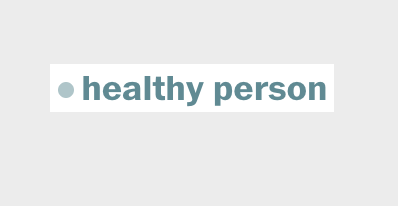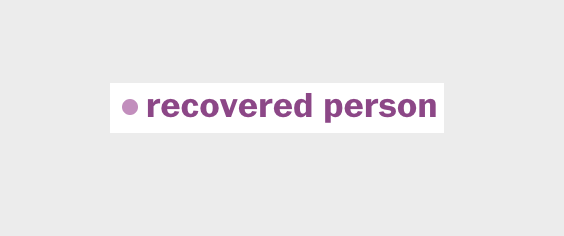Middle School High School | Daily Do
Why Do We All Have to Stay Home?
Secondary Edition

Biology Crosscutting Concepts Is Lesson Plan Life Science Mathematics NGSS Phenomena Science and Engineering Practices Teacher Preparation Middle School High School Grades 6-8 Grades 9-12
Sensemaking Checklist




Introduction
This task, Why do we all have to stay home? Secondary Version, provides guidance for secondary students to use models published in The Washington Post to figure out the relationship between social distancing and the spread of coronavirus through a community. Prompts are provided to help students engage in individual and shared thinking at various points in the lesson. Educators can modify the task for synchronous or asynchronous distance learning by providing digital spaces for students to share, critique, and build on one another’s thinking. If students are unable to connect virtually via internet or cell phone, encourage them to participate in the task (activities and discussions) with them.
Part 1: What is social distancing, and what’s our current thinking about why we’re being asked to do it now?
Part 2: But why are we closing schools even if no known cases of COVID-19 are in them?

Many schools have closed across the country (has yours?) even when there were no known cases of the disease caused by the coronavirus among the students, staff, or visitors to those schools. With your thought partner(s), share and record your current thinking about why this is.
Part 3: How can we know that social distancing measures like school closures can make a difference in slowing the spread of COVID-19 (the disease caused by the coronavirus)?
What tools can we use to predict how our individual and collective actions will impact the disease’s spread?
With your thought partner, make a list of ways that we can predict how what we do will impact the disease’s spread even before we take action.

Part 4: If we were to run a computer simulation to help us predict how the coronavirus will spread based on our actions, what would we want that computer simulation to represent?

One common tool that scientists use to help with making predictions are computer simulations. Maybe this idea was included in your list from Part 3. If it wasn’t, it probably connects to some ideas you did have!
Considering our questions and based on what you know about how viruses and other germs spread, what would you include in a computer simulation of the coronavirus/COVID-19 and its spread in our communities? With your thought partner, make a list of what you would like to be included. (Don’t worry about how to make the computer program right now; just brainstorm what would be in your ideal program).
Part 5: What aspects of the virus does the simulation below represent?
Watch the videos of the first computer simulation below (or view them directly from the Washington Post article here). With your thought partner(s), reflect on the question in the title above. Also consider the following:
- Do the features included in the simulation overlap with your ideas from Part 4?
- What from your list is missing from these simulations?
- How else could the simulations below be improved to better reflect what you know about how a virus gets transmitted from one person to another?
| Table 1 | |||||
|---|---|---|---|---|---|
|
Part 6: What does the second simulation below predict about how the coronavirus/COVID-19 will spread across a community after it is introduced?
Run the improved simulation below (which you can also access via the Washington Post article) and answer the question in the title above. Note that this simulation represents a case in which no social distancing is attempted. Also consider these questions:
- What gets added in this simulation?
- In what ways is the simulation below more useful and realistic than the simulation in Part 5?
- How could we change this simulation to represent social distancing?
Be sure to use the Talk Tips and to continue to record your thinking.
Part 7: Is it exactly the same as the first run?
Run the same simulation a second time. (In the video above, the simulation is run twice. Review both runs of the simulation in the video carefully, or go directly to the Washington Post article and run the simulation a few more times). Answer the question in the title above, and consider these questions:
- Why do you think there are changes from one run to the next? How could this be programmed into the simulation?
- What does this reflect about what we know about the real world?
Part 8: How does another simulation represent individuals who are staying home and avoiding contact with others outside of their homes (social distancing)?
Run the simulation with moderate social distancing (3 out of every 4 individuals in the population participate in social distancing). You can use the video below to view this simulation or run it yourself by going directly to the Washington Post article.
In addition to discussing the question in the title above, consider these questions: Why does this representation make sense based on what we know about social distancing and how the virus gets transmitted? What changes when we add moderate social distancing to the simulation?
Part 9: How does this more widespread version of social distancing change the outcome?
Run the simulation with extreme social distancing (7 out of every 8 individuals in the population participate). You can use the video below (showing two runs of the simulation) or run it yourself by going directly to the Washington Post article.
Discuss and record your thinking about the title question. Run the simulation again. Why is it that even though there are random differences from one run of the simulation to the next, the results of this simulation and the previous one can help us predict what will happen as more individuals take social distancing seriously? What does this tell you about actions that you should take?
Part 10: If every individual in a population follows strict social distancing, what would happen to the spread of the virus?
Though we don't have a simulation to represent this case, based on what you know about how social distancing is represented, what would happen in a simulation with 100% social distancing?
Also consider these questions: Why don’t we aim for this in our communities? Who cannot follow strict social distancing?
Part 11: What are some other ways this simulation could be improved to better reflect the real world?
The Washington Post article suggests adding one more component to the simulation (deaths) that might make it more realistic. Brainstorm other components that could be added (answer the question in the title above).
Also consider this: What are some reasons it’s not possible (or necessary) to build a simulation that reflects every aspect of the real-world coronavirus/COVID-19 situation?
Part 12: Why is information regarding the different ways COVID-19 affects individuals important for understanding how we can use the computer simulation to react to the spread of the coronavirus?
One thing the simulation doesn’t show is that different individuals who carry the virus have different responses. For example, while COVID-19 affects some people seriously, many people with the virus show very mild or no symptoms (they are asymptomatic). However, evidence suggests that these individuals can still pass the virus on to other individuals.
Discuss how does this information (in addition to the simulation data) impact your understanding of how we should respond to the virus.
Do you want to learn more? What questions do you still have? What else could you do to investigate your questions?
Do you want to learn more about social distancing and the coronavirus/COVID-19? What questions do you still have? What ideas do you have for investigating these questions? Read these three articles for more information:
- Deciding How Much Distance You Should Keep (The New York Times)
- It's Time to Get Serious About Social Distancing. Here's How (National Public Radio)
- Social Distancing: This Is Not a Snow Day (Ariadne Labs)
Do you want to learn more about how computer simulations predict how the coronavirus spreads through local and global communities? Want to see how well they predicted the spread? Read these two articles for more information:
- Here's How Computer Models Simulate the Future Spread of the New Coronavirus (Scientific American, February 2020)
- Mapping the Social Network of Coronavirus (The New York Times)
Do you want to learn more about how computer simulations are used in other fields of science like climate science, ecology, or chemistry? What questions do you still have? What ideas do you have for investigating these questions? Read these three articles for more information.
- Climate Models (National Oceanic and Atmospheric Organization [NOAA])
- A full simulation of H1N1 flu virus (Chemical Engineering News)
- Super-urinators among the mangroves: Excretory gifts from estuary's busiest fish promote ecosystem health (Science Daily)
NSTA Collection of Resources for Today's Daily Do
NSTA has created a Why do we all have to stay home? collection of resources to support teachers and families using this task. If you're an NSTA member, you can add this collection to your library by clicking ADD TO MY LIBRARY, located near the top of the page (at right in the blue box).
Check Out Previous Daily Dos From NSTA
The NSTA Daily Do is an open educational resource (OER) that can be used by educators and families providing students distance and home science learning. Access the entire collection of NSTA Daily Dos.
Acknowledgement
The coronavirus simulations used in these tasks are part of the story "Why Outbreaks Like Coronavirus Spread Exponentially and How to 'Flatten the Curve,'" published in The Washington Post on March 14, 2020.




